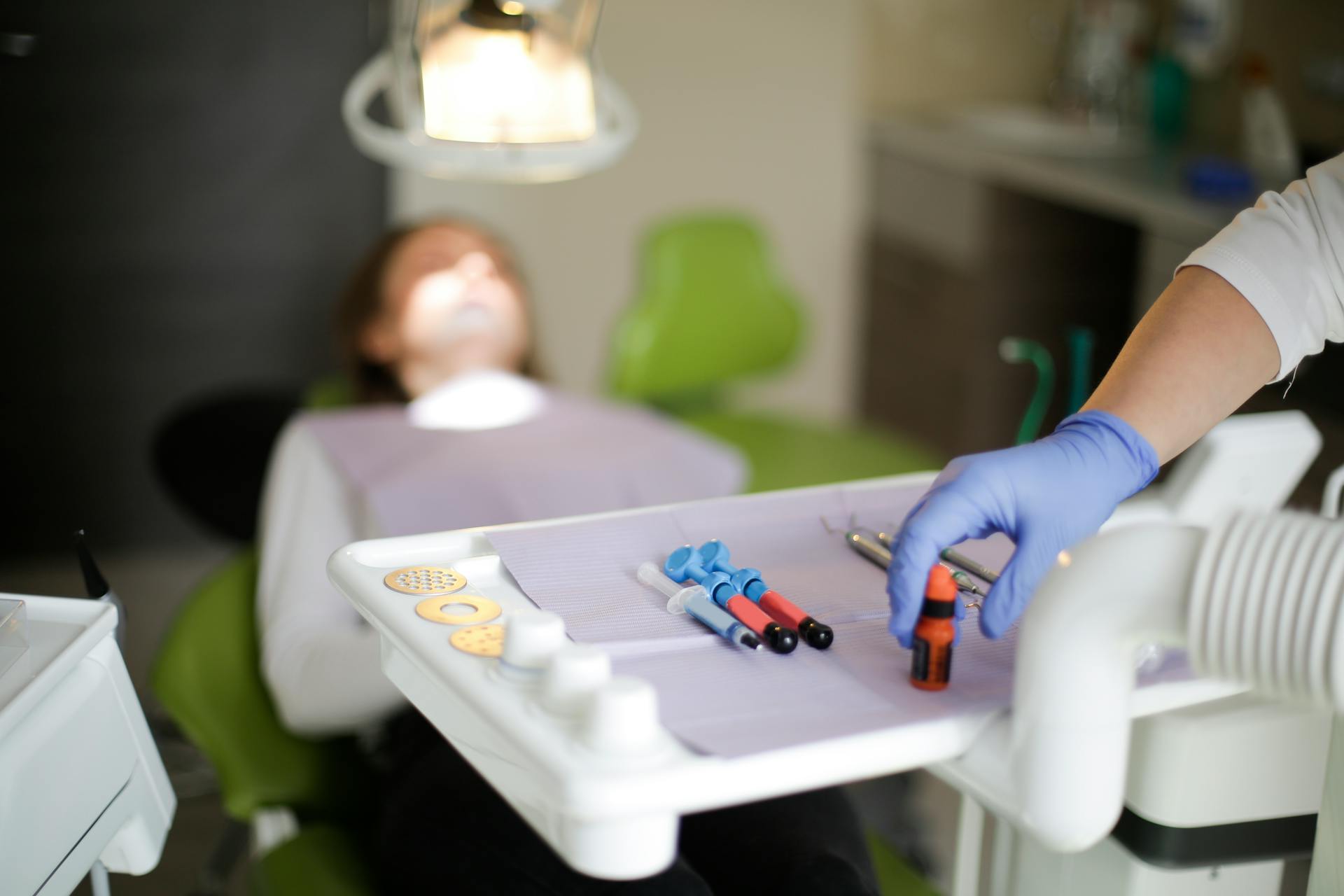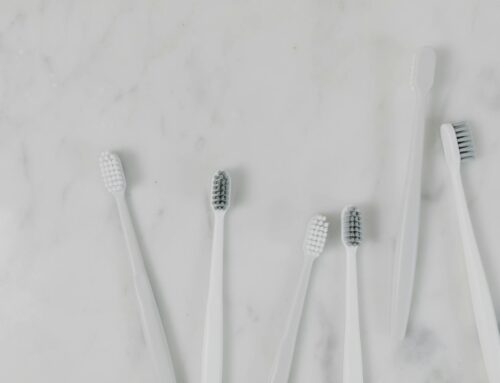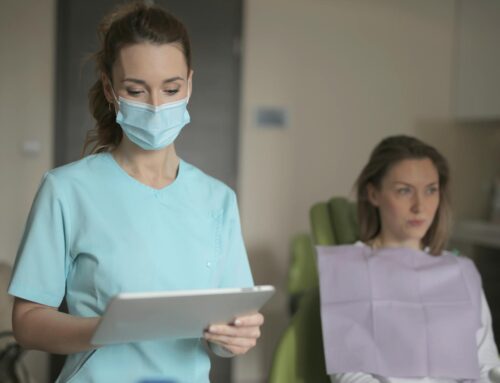Recent research has looked into where splatter during dental surgeries goes. When visiting the dentist, splatter is common, with any dental procedure creating it. The research has looked to see which areas are most at risk by splatter, which can result in a spread of infection. The research team also made some recommendations for the future.

A first-of-its-kind study has looked into patterns of splatter contamination that are created by dental instruments during various oral surgeries [1].
The findings of the study have resulted in the research team being able to provide suggestions for oral surgeries in dental clinics – which can aid the safety of patients and clinicians.
What is dental splatter?
Dental splatter is the name given to the various aerosols and droplets that are produced during dental procedures [2]. They can transmit from one human to another.
Due to the risk of infection from splatter, dental clinics often put measures in place to try and contain any viruses or diseases. There are many airborne diseases that exist – making it crucial to protect both clinicians and patients.
The Research
The research was undertaken by the University of Minnesota’s School of Dentistry. Their findings were published in the Clinical Oral Investigations journal [1].
The team set up a study using manikins – which acted as patients for a simulated surgical extraction of four molars. This involved one molar from each quadrant [1].
The extractions were handled by one dentist and one assistant. To see the difference between various techniques, four types of irrigation were used [1]:
• Saline with a self-irrigating drill
• Saline with hand irrigation
• Hydrogen peroxide with a self-irrigating drill
• Hydrogen peroxide with hand irrigation [1]
These operations were repeated 13 times for each technique, with the aim of ensuring the study would produce reliable results. The splatter was collected on glass fiber prefilters, which were left to dry [1].
Next, the glass fibers were photographed under UV light, which provided the researchers with information on where the splatter had ended up [1].
The results of the study were interesting. The study showed that the most splatter occurred on the chest of the patient. Moreover, this was followed by the face shield of the assistant [1].
Other areas where the splatter ended up included the dentist’s face shield, and the corner of the operation area [1]. This shows that throughout all operations, splatter can occur in a lot of areas.
In regards to the different techniques, the research showed that using hydrogen peroxide as an irrigant instead of saline increased the area where the splatter occurred [1]. This suggests that avoiding the use of hydrogen peroxide can be beneficial to avoid excess splatter.
Recommendations from the researchers
The study provided results that allowed the researchers to make some recommendations for dentists and policy makers. This is important, as splatter has the potential to cause infection.
Therefore, it is particularly useful that dentists are aware of the risk that hydrogen peroxide irrigant can have. This particular finding is concerning, as hydrogen peroxide is commonly used as a pre-procedural rinse [3].
The topic of splatter is something that is well-known among dentists. Professor Rachel Uppgaard was the lead author of the study, she has commented on the findings [3].
Uppgaard has said that analysing irrigation is important, as dentists “can’t do surgery without it” [3]. Now though, Uppgaard says that the dentists “know more about the patterns generated and can make decisions about our clinical practice” [3].
In response to the concerns about hydrogen peroxide irrigation, the authors have suggested that it could “change the pre-existing ideas about using hydrogen peroxide” for such purposes [3]. Their recommendation is that alternative irrigation methods are used.
They have also recommended that dentists continue to use personal protective equipment – due to the high levels of splatter [3]. Many dental clinics have stopped using such equipment due to the lower levels of Covid-19 – but the authors argue that this measure shouldn’t be stopped.
Finally, the authors have recommended that further research is done into the impact that irrigants and irrigation methods have on viral load and the spread of viruses in a dental clinic.
These findings are useful, and should help to improve the safety of dental clinics – both for dentists and patients. They may also have a positive long-term impact, with dental clinics likely to take such recommendations into account.
Thinking points…
[1] It is important to get a dental check-up once every six months. This will help keep your oral health strong – with a dentist able to have a thorough look at your mouth and make observations. If treatment is needed, they can recommend it. We urge you to book an appointment soon!
[2] When you read this article, make sure you don’t become scared of visiting the dentist. Dental clinics – especially since Covid-19 – have plenty of safety measures in place to try and contain any splatter. If you are worried, you can always speak to your dentist. It is important to regularly visit a dentist – why not book an appointment now?
What we offer at Taradale Dental
Taradale Dental is a Calgary dental clinic that provide its patients with a wide range of dental treatment options and advice aimed at improving their oral health.
We advise our patients to attend our Calgary dental clinic at least twice per year for a regular dental check-up. At these check-ups, we provide a comprehensive review of a patient’s oral health. If any problems are detected, we have many treatments available. For example, these include cavity fillings and root canals. To strengthen your oral health, we recommend brushing your teeth at least twice a day and flossing regularly.
Here at Taradale Dental, we also have some cosmetic treatments available! These include dental implants, teeth whitening and Invisalign™! Many people find that these treatments have a positive impact on their appearance, confidence and self-esteem.
Moreover, all of our services at our Calgary dental clinic Taradale Dental are set in line with the Alberta Dental Fee Guide. This ensures transparent and fair pricing.
We hope to see you soon at our Taradale Dental clinic in Calgary! You can find out more about us by visiting our website https://taradaledental.ca.
References
[1] Johnson, A., Huang, B., Galina, I. C., Ngo, A., & Uppgaard, R. (2023). Splatter generated by oral surgery irrigation and its implication for infection control. Clinical Oral Investigations. 27: p6607-6612. DOI: https://doi.org/10.1007/s00784-023-05266-x.
[2] Harrel, S. K., & Molinari, J. (2004). Aerosols and splatter in dentistry. The Journal of the American Dental Association. 135 (4): p429-437. DOI: https://doi.org/10.14219/jada.archive.2004.0207.
[3] University of Minnesota. (2023). First-of-its-kind splatter study examines infection control during oral surgery. Available: https://medicalxpress.com/news/2023-11-first-of-its-kind-splatter-infection-oral-surgery.html. Last accessed: 25th November 2023.


